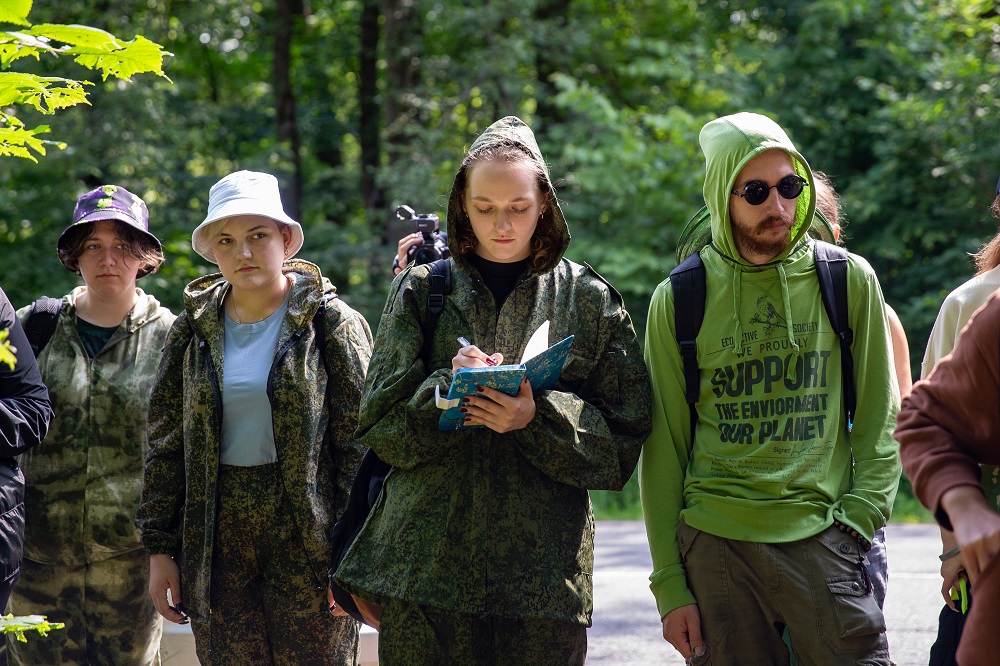- 15.07.2023
A whole month of magical life!
The educational process for biologists includes not only lectures, laboratory and practical classes, but also work in the field, where living organisms are studied in their natural habitat, as well as the collection of biological material for further desk research.
Such field practice is an obligatory part of the educational process and can be "winter" and "summer". In winter practice, students study the behavior of animals and traces of their vital activity, learn to identify plants in a leafless state, lay laboratory experiments to assess the physiological and biochemical parameters of plants, and study the behavior of laboratory animals. But this is only an "introduction" to a great flight practice.
In the summer, students, first of all, get acquainted with the methods of field biological research. There are many of them, and they depend on the object of study. For example, special traps are installed to account for rodents and crawling insects. Air nets are used to catch flying insects, and water nets are used for inhabitants of reservoirs. When studying the plant world, floristic methods are used, which is accompanied by the collection of herbarium. By the way, the TSU herbarium is registered in the international database, has the acronym TULGU and is annually replenished with student and teacher fees! Evaluation of herbarium collections is the topic of a separate scientific study of students ... To identify the diversity of vegetation, geobotanical descriptions are used with the laying of trial plots.
For students of biology (and bioecology!) it is important to know not only the diversity of species, but also to understand the relationship between them in the natural ecosystem, as well as the relationship with environmental factors. To do this, students get acquainted with the methods for assessing abiotic indicators of the environment. In each natural ecosystem, illumination, air and soil temperature, acidity and soil moisture are determined, and in aquatic ecosystems, the speed of water flow, acidity and salt content in water.
An important part of any ecosystem is the soil, and therefore students must dig pits, describe the soil profile and take soil samples for further study in the laboratory. And at the same time they study soil insects and other invertebrates, note traces of the vital activity of vertebrates (for example, molehills).
In other words, students master a set of methods that allows not only to identify the diversity of living organisms, but also to assess the state of their habitat. Such an understanding of the diversity of relationships between all components of the ecosystem allows students to characterize the state of any ecosystem in practice, and in the future - to develop approaches to their conservation and restoration! This is what biology students are taught at TSU.
However, it is necessary to understand that natural ecosystems are diverse and in different conditions - different types of plants and animals. To get acquainted with the diversity of natural ecosystems, biology students travel to different parts of the Tula region.
This year, students visited a section of the Tula Zaseki National Park near the village of Ozerny, where they studied the species composition of the broad-leaved forest, its longline structure, assessed the diversity of plant communities, and found out the properties of the soil cover. In addition, there is a unique complex of karst swamps on this site. Students (many - for the first time!) saw the insectivorous sundew, cranberries and a number of other plant species listed in the Red Book (Scheuchzeria bog, black bud, bog myrtle, etc.), took samples of peat by drilling, found out the differences between peat in different bogs or areas, evaluated the indicators swamp water...
In a word - a comprehensive practice! And ahead is a coniferous-deciduous forest, meadows and steppes, rivers and ponds ... And such a magical life - a whole month!
Join now!
Elena Volkova
Photo by Ilya Khodakovsky
















